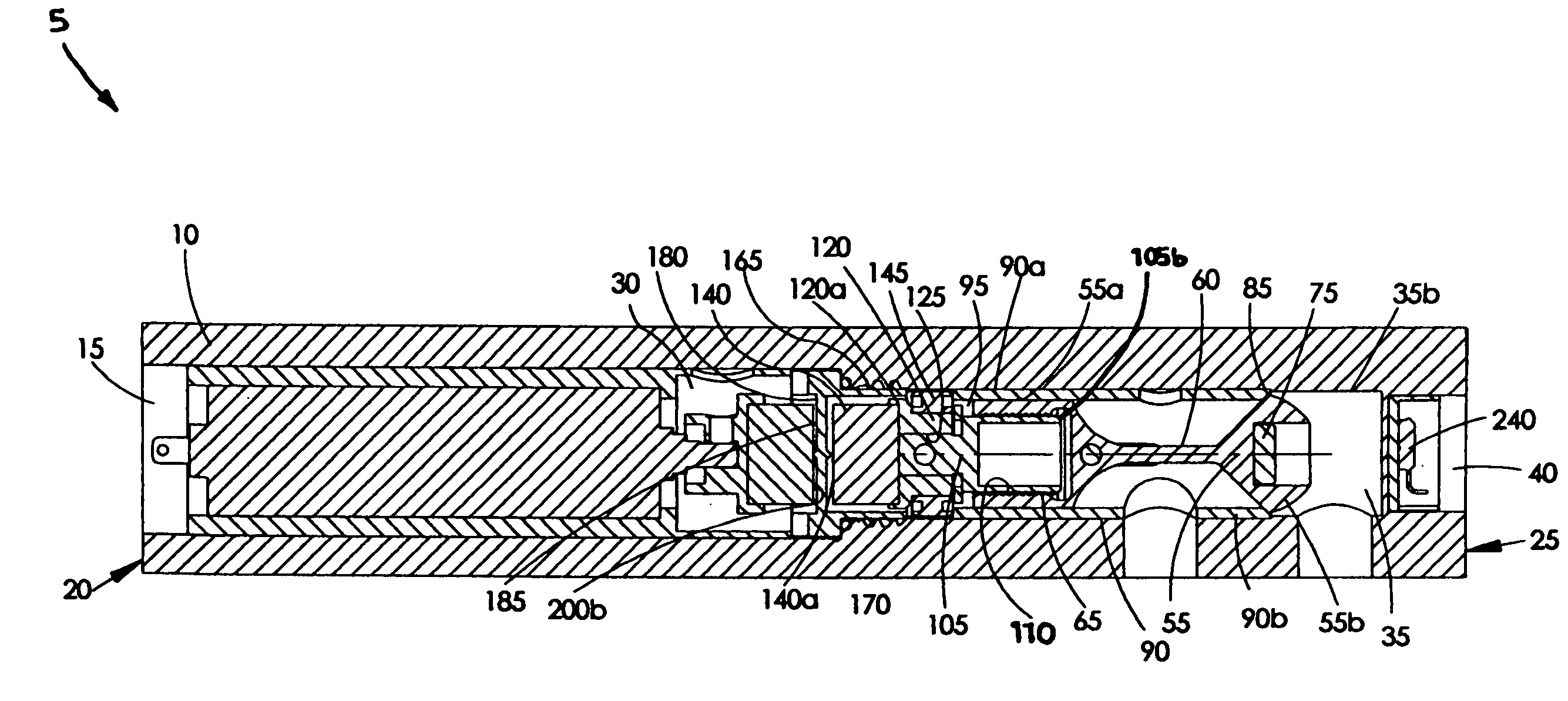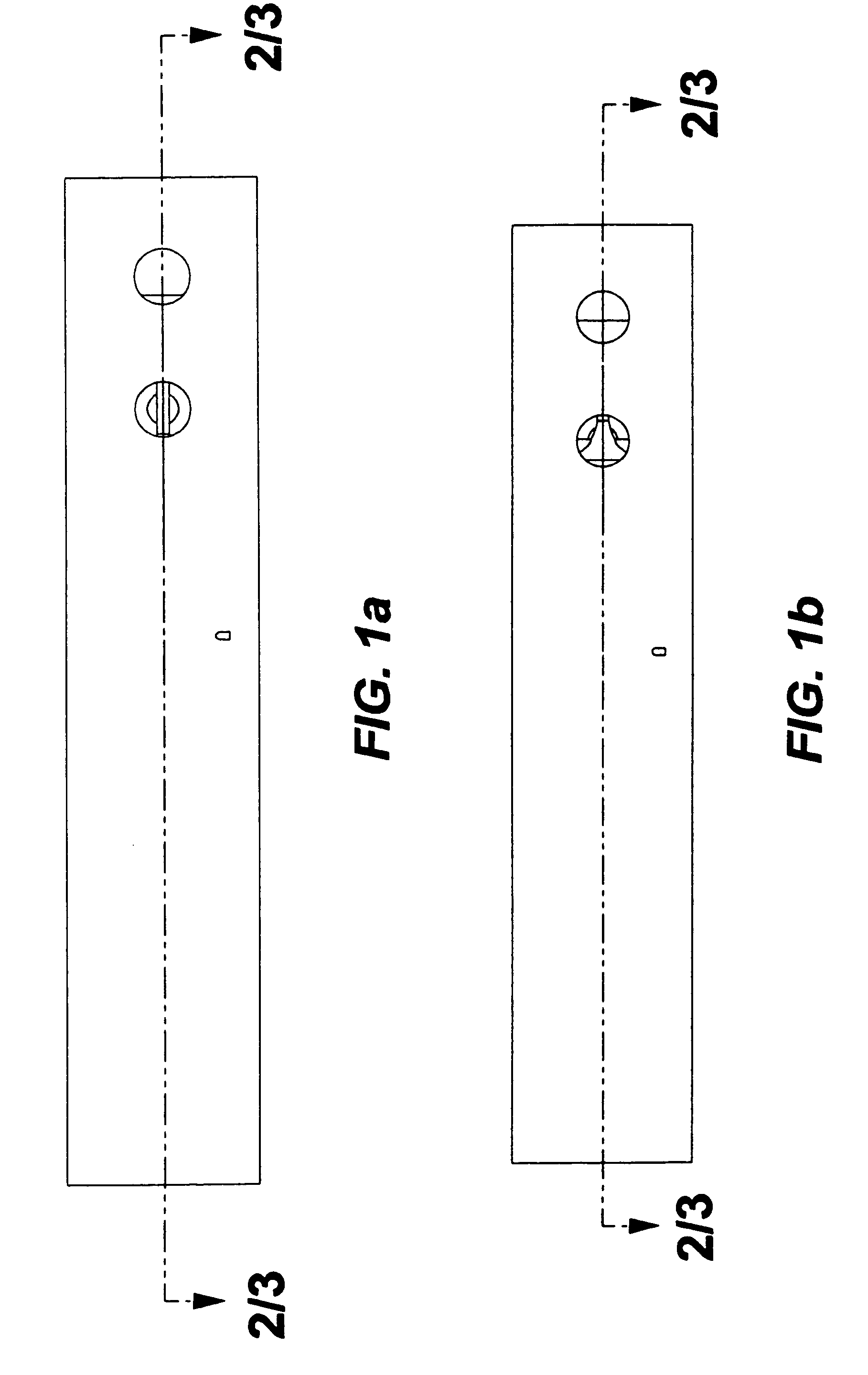Magnetically-coupled actuating valve assembly
a technology of actuating valves and magnets, which is applied in the direction of valve details, valve arrangement, valve operating means/releasing devices, etc., can solve the problems of difficult control of knee joint operation, poor control of simple artificial knee joints, and inability to walk well for amputees, so as to achieve the effect of reducing the risk of leakage and/or fire, and ensuring the safety of the ampu
- Summary
- Abstract
- Description
- Claims
- Application Information
AI Technical Summary
Benefits of technology
Problems solved by technology
Method used
Image
Examples
Embodiment Construction
)
[0021]One embodiment of a magnetically-coupled valve assembly 5 for an electronically controlled prosthetic knee can be seen in FIGS. 1–4. As shown in FIGS. 1–4, the valve assembly 5 resides within a housing 10. It should be understood that the housing 10 depicted in FIGS. 1–4 will typically consist of a portion of a cylinder housing to which the valve assembly 5 is installed (see FIG. 5). However, it is also possible that the valve assembly 5 may have its own housing (as illustrated in FIGS. 1–4), which may be of various cross-sectional shape. The housing 10 may be made of various materials of sufficient strength, but is preferably constructed of a metallic material such as steel, aluminum, or titanium.
[0022]As can be best observed by reference to FIGS. 2–4, a central aperture 15 extends into the interior of the housing 10 from a first (proximal) end 20 thereof. The central aperture 15 of this embodiment is of varying diameter for accommodating the unique components of the valve a...
PUM
 Login to View More
Login to View More Abstract
Description
Claims
Application Information
 Login to View More
Login to View More - R&D
- Intellectual Property
- Life Sciences
- Materials
- Tech Scout
- Unparalleled Data Quality
- Higher Quality Content
- 60% Fewer Hallucinations
Browse by: Latest US Patents, China's latest patents, Technical Efficacy Thesaurus, Application Domain, Technology Topic, Popular Technical Reports.
© 2025 PatSnap. All rights reserved.Legal|Privacy policy|Modern Slavery Act Transparency Statement|Sitemap|About US| Contact US: help@patsnap.com



